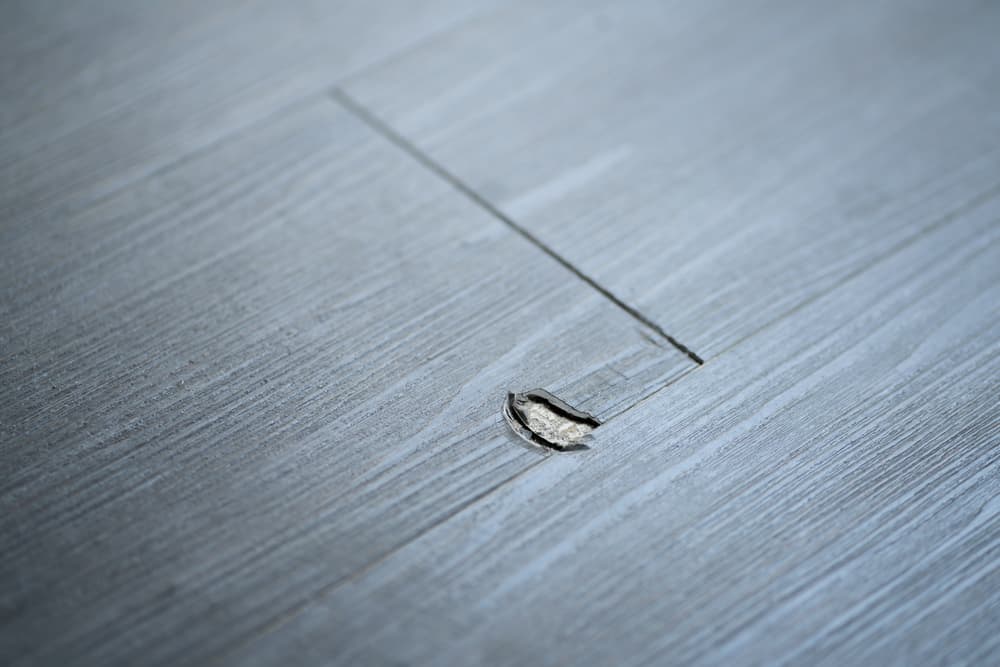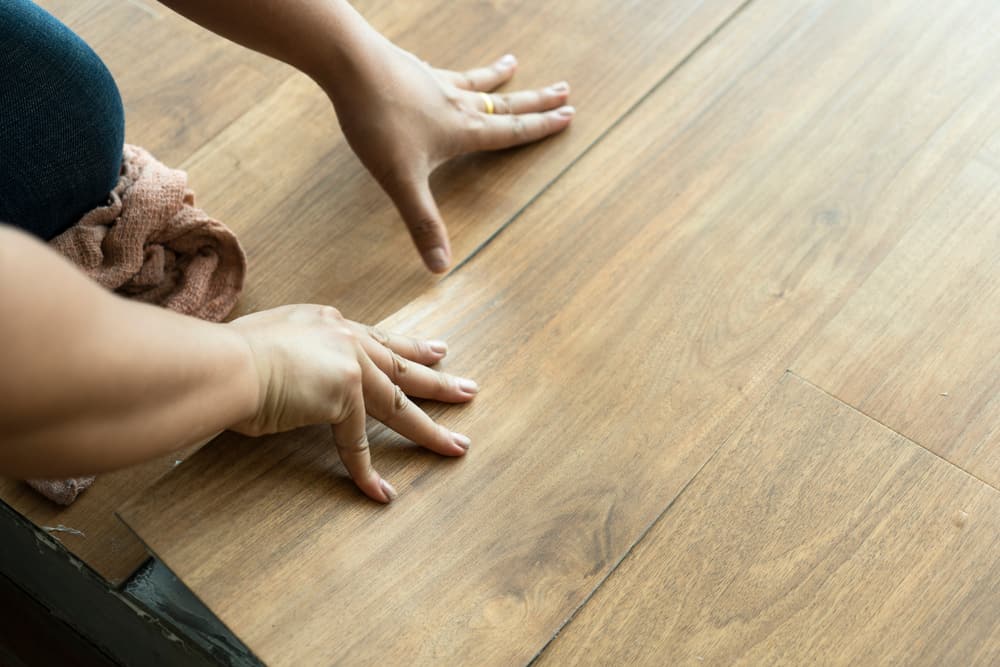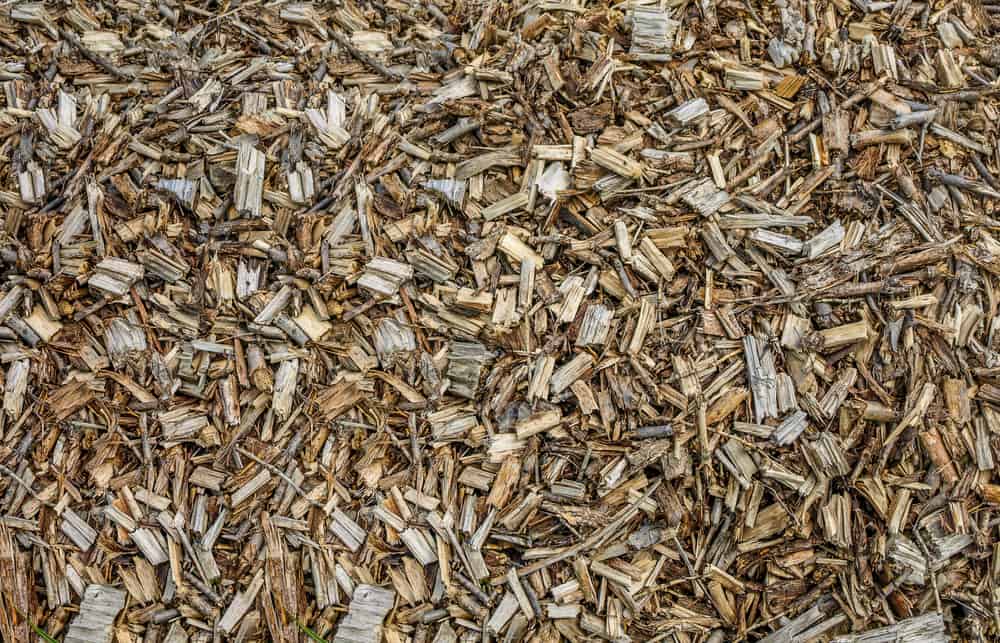Vinyl planks are among the most popular flooring materials today and for good reason – they are affordable, reliable, and easy to install and maintain.
However, as with all floors, vinyl planks have some drawbacks that homeowners need to familiarize themselves with before making a purchase, so they can know exactly what to expect.
If you are in the market for vinyl planks, this post highlights some of the disadvantages of vinyl plank flooring that most salespersons won’t tell you about. We hope it helps you make an informed decision.
Table of Contents
1. Cannot Be Repaired
This is perhaps the biggest downside of vinyl plank flooring. If a vinyl plank gets damaged, the only way to get it back in shape is to replace it; you cannot repair it.
But doing a replacement is not an easy task either, as you will have to disassemble the floor from the wall up to the damaged plank, install a new plank, then assemble the flooring again back to the wall.
However, if the damage is not too severe, say, the plank only has a small scratch, you can easily fix it using the following steps:
- Step1: Clean the area thoroughly with a solution of mild soap and water. Use a sponge or soft microfiber cloth to gently rub the area. Avoid scrubbing the spot with a hard-bristled brush or any other rough material, as this will only make the scratch worse. Once clean, rinse the area and let it completely dry before proceeding.
- Step2: Lightly sand the dent to make it smooth. Start with a 320 grit sandpaper, then follow it up with 500 grit, and finish off with a 800 grit paper.
- Step3: Clean the area again with mild detergent and warm water, rinse, and pat dry with a clean cloth or leave it to air dry.
- Step 4: Apply car wax to the area to bring back its shine. You will want to reapply the wax every few months, as it wears off quickly. Placing a rug over the area can help the wax last longer.
While repairing the scratch will keep it from getting worse with time, note that the patched spot will usually not look exactly like the rest of the plank.
2. Less Durable Than Real Wood
Even though vinyl is designed to look exactly like natural wood, it doesn’t last as long as wood does. Whereas some high-quality hardwood floors will last over forty years, vinyl planks will last somewhere between ten and twenty years.
However, if vinyl planks are installed properly and given the appropriate care and maintenance, they can last up to thirty years.
So, how can you increase the lifespan of your vinyl plank flooring? Here are a few tips.
-
Use mild cleaners
Harsh detergents can strip away the protective layer of your vinyl, exposing it to scratches, dents, and stains that could cause the flooring to wear out prematurely.
In most instances, warm water would be sufficient to get rid of dirt and stains from your vinyl. But if you must use a cleaner, make sure to use a vinyl-friendly one like mild dishwashing liquid. You can add rubbing alcohol to the cleaning solution to help the floor dry faster. Watch this video on how to properly clean vinyl plank floors and the best products to use.
-
Protect the floor from direct sunlight
If your vinyl flooring is constantly being exposed to direct sunlight, it will slowly start to discolor, and eventually, the pattern on the vinyl will completely fade away.
The best way to prevent sunlight from entering your indoor space is to keep blinds and curtains closed. You could also have the spots where the sun hits the most covered with a piece of cloth or some furniture.
-
Wipe off spills right away
Although vinyl planks are waterproof, it is still important to wipe off spills quickly whenever they happen so your floor stays dry. You don’t want moisture going through the seams or grooves and getting stack between the vinyl and the subfloor, as this will provide the perfect environment for mold to grow.
In addition to cleaning up spills, make sure to sweep up dirt frequently, as it can also attract mold. If mold grows under your vinyl planks, your flooring will not only start to emit an unpleasant odor; it will also begin to deteriorate, which will reduce its lifespan.
3. Emits Volatile Organic Compounds Into the Air
Products made of vinyl are notorious for emitting harmful gases and volatile organic compounds (VOCs) into the air, which has been found to have adverse effects on humans. When installed in homes, these compounds can be hazardous to people with respiratory allergies.
While vinyl planks are generally very low in volatile organic compounds, some cheap brands may still contain materials that can expose you to these harmful chemicals.
However, the extent of the damage will depend on numerous factors including the amount of the VOCs in the air and the length of time you were exposed.
If you are only exposed for a short period of time, you will likely only experience headaches, dizziness, eye itchiness, or respiratory tract irritation. Continued exposure can result in asthma, respiratory allergies, and other serious lung problems.
Luckily, vinyl planks only outgas for a short time after the installation. But this will depend on the quality of the vinyl and other materials the flooring is made of. Planks made of high-quality materials will likely stop emitting toxins a week or two after the installation but low-quality floors will take longer, with some taking up to two months.
To get rid of the ‘new floor’ smell quickly, try to keep your home well ventilated. Cleaning the vinyl floor regularly and using air fresheners could also help.
4. Glued Vinyl Planks Can Be Difficult to Remove and Reuse
If you have installed loose lay or click and lock vinyl planks, then removing them can be relatively easy. The problem comes when the planks are glued down.
While glued vinyl planks are sturdier than their floating counterparts, the floors can be hard to pull off. You will need to carefully pry them to make sure they are coming out intact.
Also, planks that had been glued down can be very difficult to use because no matter how careful one is with the removal, the adhesive typically causes the backing to rip and peel.
To use such planks again, you will need to sand the back side to even it out before reapplying the adhesive, and this can be really time-consuming.
5. Nonbiodegradable
Vinyl planks aren’t biodegradable, and depending on the materials used, they can also be very difficult to recycle. So, if you are looking for flooring that is environmental-friendly, you may want to consider other options like natural hardwood.
6. Does Not Improve Home Value
Compared to the natural wood, vinyl plank flooring will not boost the value of your home. This is particularly because vinyl planks are much cheaper than hardwood. While vinyl planks will cost only $5 per square foot, wood planks will cost up to $12 per square foot.
As such, homes with natural wood floors will tend to sell higher than those with the cheaper vinyl plank flooring.
7. Prone to Damages
While vinyl planks can handle a little bit of misuse for some time, dropping sharp objects, pulling and pushing furniture, and walking on it in pointed heels will scratch or scuff your flooring.
When the flooring is just new, it is recommended that you wait for a few days before bringing in heavy objects like furniture or walking on it. This is especially true for glue-down planks; it will give the adhesive enough time to firmly attach the planks to the floor.
It is also important to protect the floor from wear and tear by avoiding pulling or pushing heavy objects or dropping sharp items.
8. Can Chip Around the Corners
Chipped edges are usually a result of improper installation. While vinyl planks are relatively easy to install, you need to take utmost care when handling a plank especially if you are using a hammer and tapping block to properly fit the planks into their appropriate grooves.
Using excessive force when hitting the planks can leave marks, dents, and gouges around the edges of the boards, and this will not only make it more difficult for the planks to click and lock but also leave the flooring looking and feeling uneven.
The Takeaway
Vinyl planks have some shortcomings that may make them appear somewhat lower-quality compared to high-end floorings like natural hardwood. But make no mistake; vinyl planks are still some of the most popular flooring options on the market today, as they are more affordable and much easier to install than real wood.
While it’s is important to know the flaws of this flooring, you ought to find out the things that still make it a preferred option by homeowners. That way, you will be able to make an informed buying decision.


